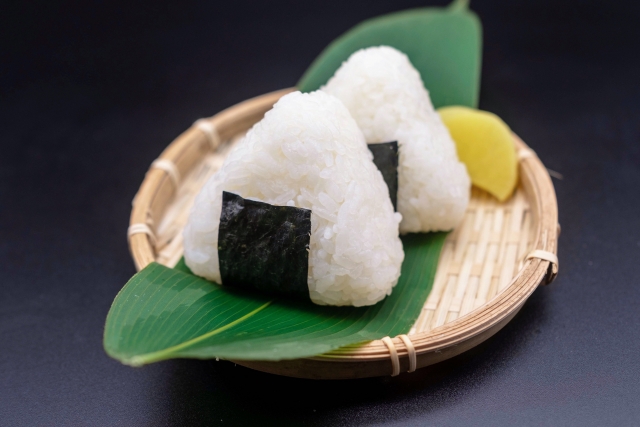Introduction

“Run with the Wind” masterfully captures the essence of teamwork and personal struggle through the lens of an eclectic group of university students, who embark on the challenging journey to compete in Japan’s prestigious university marathon relay, the Hakone Ekiden. Adapted from the compelling novel by Shion Miura, this anime series delves deep into the interconnected lives of its characters, each bringing unique backgrounds and motivations to the team.
Set against the backdrop of athletic rigor, “Run with the Wind” explores not only the physical demands of the sport but also the emotional and psychological growth that comes with it. As each character confronts their own limitations and personal issues, the series paints a poignant picture of friendship, resilience, and the relentless pursuit of one’s dreams. This combination of sports dynamics and intricate personal development themes offers viewers a unique blend that goes beyond typical sports anime, making it a resonant story for a diverse audience. Through this introduction, we invite viewers to experience the highs and lows of the Hakone Ekiden, rooting for a team as diverse as it is determined, each step a stride towards personal and collective triumph.
Character Dynamics and Development
“Run with the Wind” intricately portrays the growth and dynamics between Kakeru Kurahara and Haiji Kiyose, set against the backdrop of Japan’s rigorous Hakone Ekiden. Kakeru, a gifted runner with a troubled past, finds new meaning and challenges within the team, while Haiji, the optimistic and strategic team captain, reveals a deep dedication to bringing together runners from disparate backgrounds.
The series excels in its exploration of how these diverse characters from varied walks of life—ranging from a taciturn law student to an animated otaku—each add depth to the narrative through their personal hurdles and victories. Their development is not just about athletic achievement but also about overcoming personal issues and finding a collective purpose. This ensemble cast’s individual journeys contribute uniquely to the team’s collective quest, making their narrative rich with lessons on perseverance, teamwork, and leadership.
By focusing on character dynamics, “Run with the Wind” delivers more than just a sports story; it dives deep into the heart of what makes a team function like a well-oiled machine, with each member’s growth contributing to the whole. It’s a celebration of differences and a testament to what can be achieved when individuals unite with a common goal. This character-driven approach not only enriches the story but also offers viewers a multifaceted look at the complexities of personal and athletic challenges.
Plot Highlights and Key Episodes

“Run with the Wind” captivates viewers by following the journey of ten university students who aim to compete in the prestigious Hakone Ekiden. The series excels in depicting their transformation from amateurs into a cohesive and competitive team. Key episodes and plot highlights reveal both their physical and emotional challenges, culminating in pivotal races that define their progress and personal growth.
One significant episode centers on their first practice race, where each member confronts their physical limits and personal fears, setting the tone for their commitment to the team’s goal. Another crucial moment occurs mid-series during an intense training camp, which tests their endurance and fortifies their resolve, illustrating the grueling nature of their preparation.
The climactic episodes that showcase the actual Hakone Ekiden are emotionally charged, highlighting not just the runners’ physical prowess but also their mental resilience. The portrayal of each leg of the race delves into the individual stories of the runners, emphasizing moments of doubt, perseverance, and eventual triumph.
These episodes are not just about the races but also about the bonds formed between team members. The challenges they face and overcome together serve as a testament to the power of teamwork and shared dreams. This narrative structure not only keeps viewers engaged but also provides a deep emotional connection to the characters, making “Run with the Wind” a standout series that blends sports action with compelling human drama.
Themes and Symbolism

“Run with the Wind” masterfully intertwines themes of perseverance, teamwork, and personal discovery, capturing the essence of youth and ambition through the metaphor of running. The series presents running not merely as a physical activity but as a profound journey of self-discovery and collective effort, where each stride symbolizes the characters’ growth and resilience in facing life’s hurdles.
The act of running in the series is laden with symbolism. It represents the various life challenges each character endures, from Kakeru’s struggle with his past to Haiji’s dream of achieving something greater. As they run, the physical distance covered mirrors their emotional journeys, highlighting personal battles and victories. This symbolism extends to the team as a unit, where running epitomizes the synergy and interdependence of individuals working together towards a common goal.
Moreover, the show explores the theme of perseverance through the rigorous training and races that test the limits of the characters’ endurance and willpower. The athletes’ relentless pursuit to overcome their limitations and achieve their best at the Hakone Ekiden serves as an inspiring metaphor for tackling life’s adversities.
Teamwork is another pivotal theme, depicted through the dynamics within the Kansei University track team. The series emphasizes that success is not the triumph of a single individual but the result of collaborative effort and mutual support. Each team member’s growth contributes to the collective strength and accomplishments of the group, reinforcing the idea that we achieve more together than alone.
Personal discovery is woven through the narrative as each character confronts their inner fears, aspirations, and motivations. Running acts as a catalyst for introspection and transformation, allowing each runner to confront and reconcile with their past, thus shaping their future.
In essence, “Run with the Wind” uses the elemental act of running as a powerful symbol to explore deeper life themes, making it a profound narrative that resonates with anyone striving to overcome personal barriers or to find their place in the world.
Cultural Impact and Reception

“Run with the Wind” has emerged as a standout within the sports anime genre, resonating deeply with audiences and critics for its realistic portrayal of athleticism and the human spirit. The series adeptly captures the essence of competitive running, while enriching the narrative with compelling character development and emotional depth, setting it apart from typical sports dramas.
Critically acclaimed for its detailed and accurate depiction of training regimens and race strategies, “Run with the Wind” has been lauded for bringing authenticity to the portrayal of university track teams. Its focus on the psychological and physical challenges faced by athletes contributes significantly to its realism and relatability, which has been praised in numerous reviews.
The series has also been recognized for its contribution to promoting the values of athletics such as perseverance, teamwork, and the pursuit of personal excellence. Through its inspiring storytelling, “Run with the Wind” encourages viewers to explore their own limits and to collaborate with others towards common goals, echoing the sentiments found in real-world sports environments.
While specific accolades might not be as prominent as in other mainstream titles, the series has carved out a revered place for itself within the community through word of mouth and strong online support. Fan discussions often highlight how “Run with the Wind” has motivated them to engage with or revisit athletic pursuits, underscoring its positive influence beyond mere entertainment.
In conclusion, “Run with the Wind” stands as a pivotal work within sports anime, celebrated for its thoughtful exploration of what it means to be part of a team and to compete, not just on the track, but in life’s myriad challenges. Its cultural impact is marked by an enduring legacy in how it captures the heart of the sports experience, making it a beloved series for viewers around the world.
Conclusion

“Run with the Wind” transcends the traditional boundaries of sports anime by offering a profound look into the hearts and minds of its characters, making it a deeply emotional and inspirational journey for viewers. The series not only depicts the physical endurance required in track racing but also delves into the psychological resilience needed to overcome life’s hurdles. It artfully combines elements of friendship, competition, and personal growth, making each episode a reflection of life’s own challenges and triumphs.
The realistic portrayal of each character’s struggles and breakthroughs serves as a powerful reminder of the strength found in perseverance and teamwork. Viewers are drawn into the narrative, witnessing the transformation of a diverse group of individuals into a cohesive and supportive team. The emotional depth explored in the series resonates with anyone striving to achieve a seemingly unreachable goal, making the characters’ journeys universally relatable.
“Run with the Wind” invites audiences to experience the raw and often unglamorous aspects of athletic training, alongside the small, triumphant moments that make the effort worthwhile. It encourages viewers to reflect on their own personal endeavors and the values that guide them through challenges.
For those who appreciate storytelling that mirrors the complexities of real life, coupled with the thrill and heartache of athletic endeavor, “Run with the Wind” is a must-watch. Its ability to weave together tales of individual and collective perseverance is not only compelling but also incredibly inspiring, making it a standout series that continues to inspire viewers around the globe.








